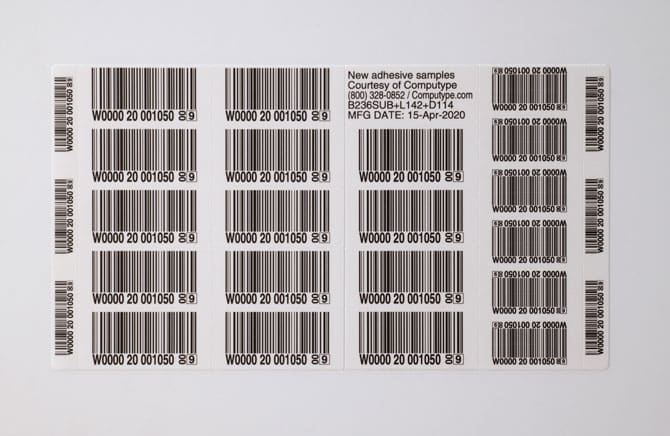If you are working in the Transfusion Medicine community, you are likely familiar with Donation Number label sets. These label sets are utilized to identify blood donations and ensure that all required information is present on every bag, tube, and donor document.
These label sets are sequentially numbered and customized to match the needs of your processes. Because blood donations ultimately end up with someone in need, it is critical that the entire collection process is accounted for and trackable.
Computype has been the largest supplier of Donation Number label sets for over 40 years; in this article, we’ll highlight how to get the most from Donation Number label sets.
1. Find a supplier that knows your business
As mentioned above, when it comes to transfusion medicine, it is imperative that everything associated with the blood donation is correctly labeled. It is important that your supplier knows the labeling standard and regulatory requirements.
While specific blood product codes identify the same product regardless of where the unit was collected, internal processes within blood banks often differ. To optimize your Donation Number label sets, you need to have a customized labeling solution to fit your specific collection and testing processes. This grants your company confidence and will also eliminate waste and unnecessary duplicate labels
2. Find an economic answer
It is important to find a solution that is cost-effective without compromising quality. An economic solution includes reduction and avoidance of waste or duplicate labels and the availability of several different products/adhesives at different price points. Find a supplier that has technologies and capabilities to reduce costs, waste, and provide you with a sustainable and economic solution.
3. Make sure all printed labels are being used
All else being equal, larger DIN sets are more expensive than smaller ones. If you find that several labels are routinely unused, a label set re-design might make sense. And for those situations in which additional labels are needed, a DIN replicator (“scan-one-print-one”) device is a low-cost way of filling the gap. Try not to design your label set for the “worst case scenario”, because often you will end up paying for labels that will end up in the garbage.
DIN Replicators enable you to scan an existing label and generates a replica. It is an ideal solution when you need additional labels for donor/patient records or confirmatory testing.
Finding a supplier that has the knowledge to help your institution excel and provide you with economically feasible options, and increase efficiencies in your lab is the best way to get the most out of your Donation Number labels sets in your blood bank.
